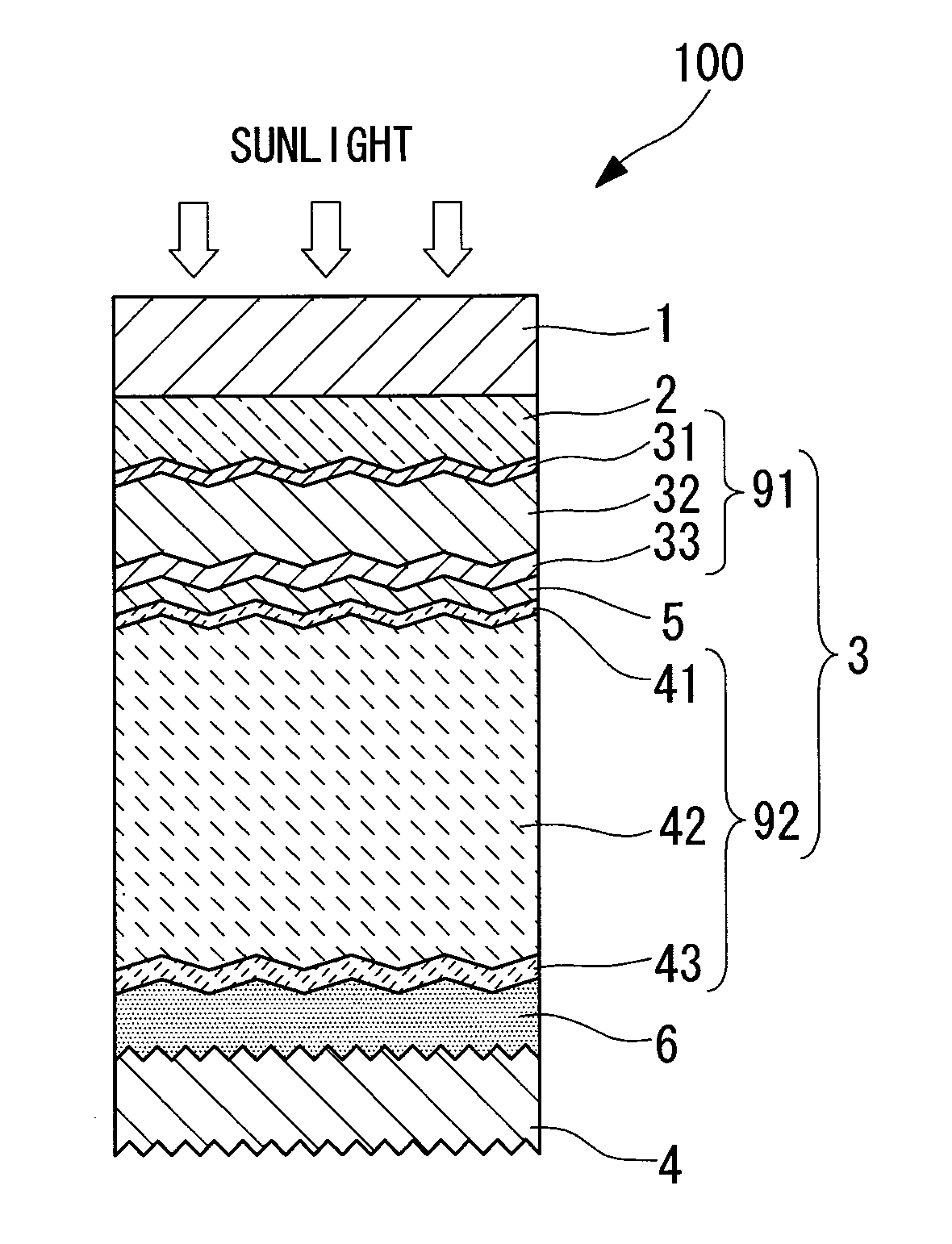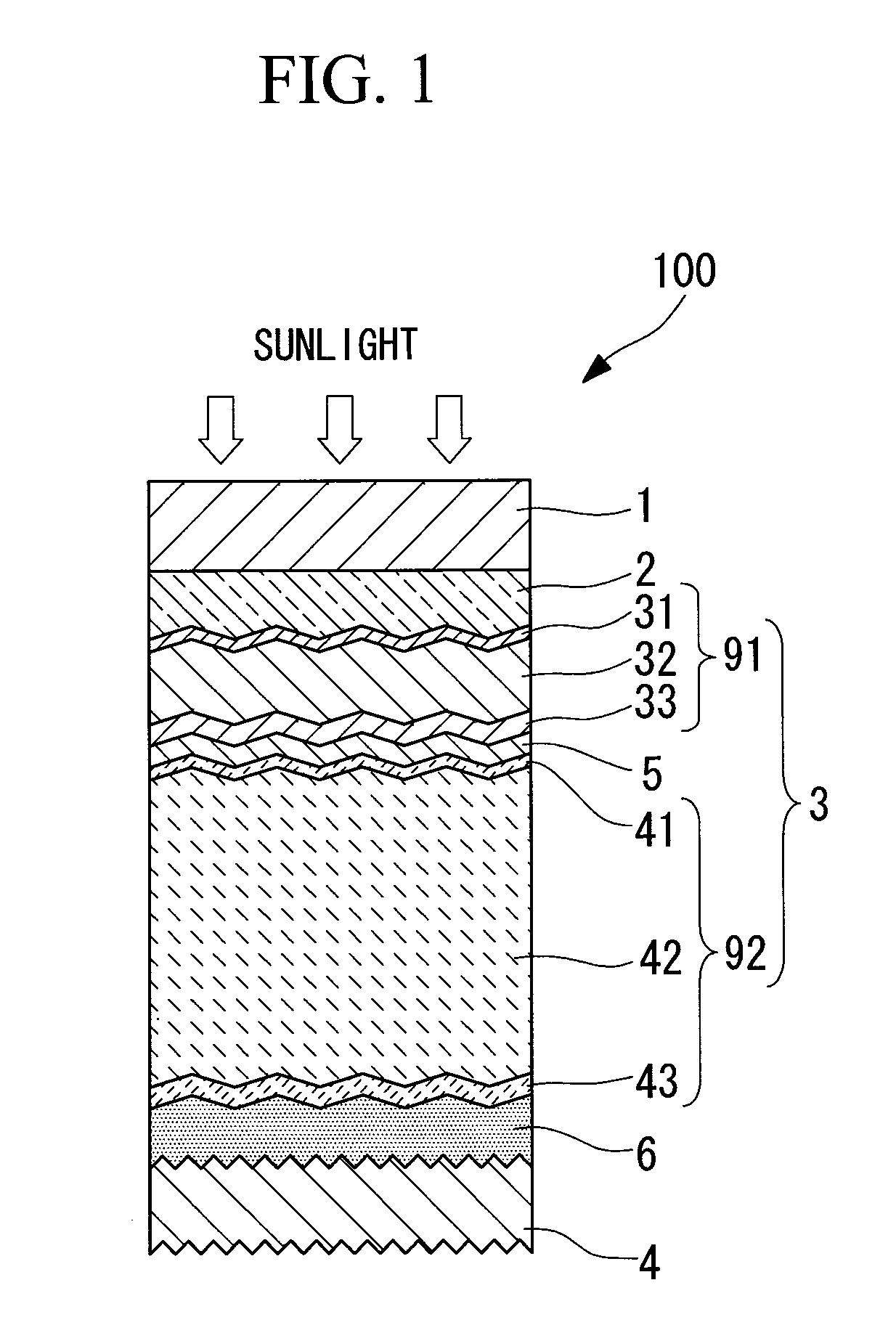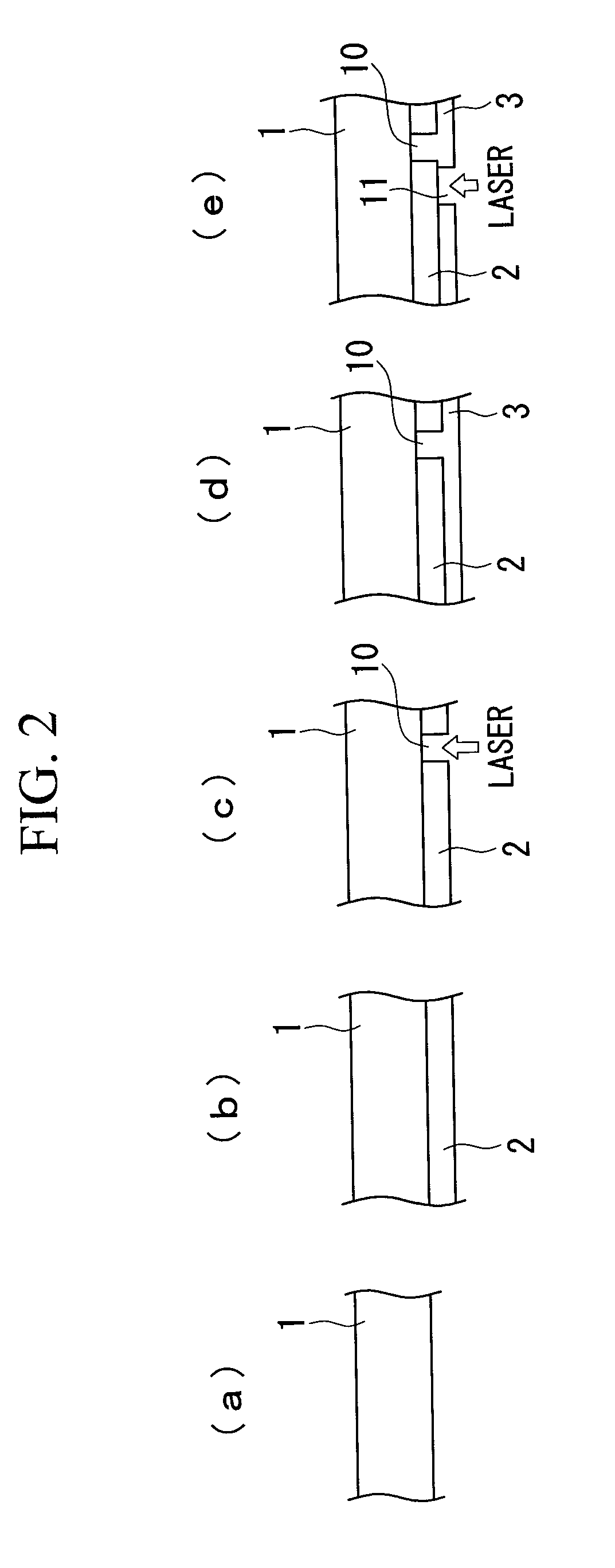Photovoltaic device
a photovoltaic and solar cell technology, applied in the field of photovoltaic devices, can solve the problems of increasing the short-circuit the internal transparency of the transparent conductive layer, and the short-circuit current of the solar cell, and achieves the effects of increasing the quantity of light absorbed, increasing the short-circuit current, and high-efficiency production
- Summary
- Abstract
- Description
- Claims
- Application Information
AI Technical Summary
Benefits of technology
Problems solved by technology
Method used
Image
Examples
examples
Optical Thin Film Calculations
[0092]Optical thin film interference calculations based on Fresnel reflections were conducted for models having a GZO film for which the light absorption (transparency) exhibited (A) a small light absorptance, (B) a medium light absorptance, or (C) a large light absorptance. OPTAS-FILM from Cybernet Systems Co., Ltd. was used as the calculation software. Data disclosed in existing literature was used as the medium data for the glass and the silver thin film. The medium data for the GZO film was determined by optical measurement of a GZO film formed on glass. Data for monocrystalline Si disclosed in existing literature was used as the medium data for the crystalline silicon. Air was assumed to have a refractive index of 1 and an extinction coefficient of 0.
[0093]Absorption spectra were calculated for a structural model (structural model 1) comprising a GZO film exhibiting the light absorption of (A), (B) or (C) formed on top of a glass substrate. The gla...
PUM
 Login to View More
Login to View More Abstract
Description
Claims
Application Information
 Login to View More
Login to View More - R&D
- Intellectual Property
- Life Sciences
- Materials
- Tech Scout
- Unparalleled Data Quality
- Higher Quality Content
- 60% Fewer Hallucinations
Browse by: Latest US Patents, China's latest patents, Technical Efficacy Thesaurus, Application Domain, Technology Topic, Popular Technical Reports.
© 2025 PatSnap. All rights reserved.Legal|Privacy policy|Modern Slavery Act Transparency Statement|Sitemap|About US| Contact US: help@patsnap.com



